The week at a glance
- Wood Duck in the Outer Hebrides
- Baikal Teal in Cambridgeshire
- Red-flanked Bluetail on Fair Isle
- American Coot and Pied-billed Grebe linger on
- Warmer conditions generate further early migrant arrivals
Despite a largely settled week with — at least from the weekend — pleasantly warm temperatures, it's still really a little early to say that spring has truly sprung. That said, there were good numbers of early migrants, with many sites recording their earliest-ever Reed and Sedge Warblers back on territory, while there was a steady movement of Ring Ouzels, Black Redstarts and Ospreys throughout. A handful of Common Redstarts added a splash of colour, the first Tree Pipit of 2014 flew over Kingsgate (Kent) on 30th and the first Pied Flycatcher was already back at Lineover Wood (Glos) on 1st, though a Turtle Dove in a Boreham (Essex) garden on 1st may have wintered somewhere closer than sub-Saharan Africa.
It was wildfowl that comprised the rarity highlights, though; not exactly what you'd expect with spring knocking on the door. Both the American Coot and Pied-billed Grebe lasted another week at Loch Flemington (Highland) and Balranald (North Uist) respectively, the former even reported to have been nest building and in immoderately close contact with one of the local Moorhens!

American Coot, Loch Flemington, Highland (Photo: Brian Anderson)
But the week's big new stars were the drake Baikal Teal discovered at Fen Drayton (Cambs) on Saturday 29th and still present at the end of the review period, and a drake Wood Duck at Stoneybridge, South Uist, on 27th–30th. Justifiably, both have been the subject of intense scrutiny, with reasons to be found for and against either being wild. The teal, which had apparently been present for a fortnight or so before it was even first reported, has history on its side: a run of recently accepted records — most recently drakes at Flamborough Head (E Yorks) last April and at Marshside (Lancs) in November–December 2013 — has set a precedent that any individual of the species has to really disgrace itself to be denied acceptance. Though watching a bird like this on a warm spring day might not seem quite as authentic as during a bitter winter freeze-up, there's nothing obvious to stand against it — that is, unless it decides to linger on throughout the summer! The Wood Duck, though, stands a tougher test. With no previous accepted records, it's likely to take a bird ringed in the States to prove that this stunning species is making it to this side of the Atlantic, despite recent records in the Azores and Iceland (two females in the latter country this winter, incidentally). Its beauty is really its downfall: Wood Duck is a very popular species in collections, and there are no shortage of free-flying birds in Britain. That said, a wary drake (it readily swam across the loch, away from the observer's car on 27th) in the Outer Hebrides in early spring... it's unlikely to get much better, unless we do manage a ringed bird.
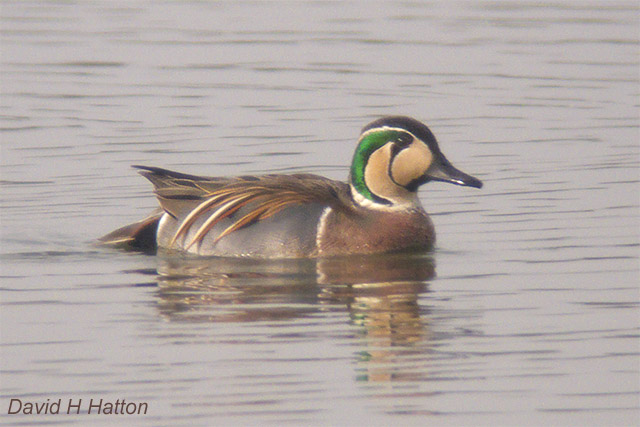
Baikal Teal, Fen Drayton Lakes RSPB, Cambridgeshire (Photo: David H Hatton)
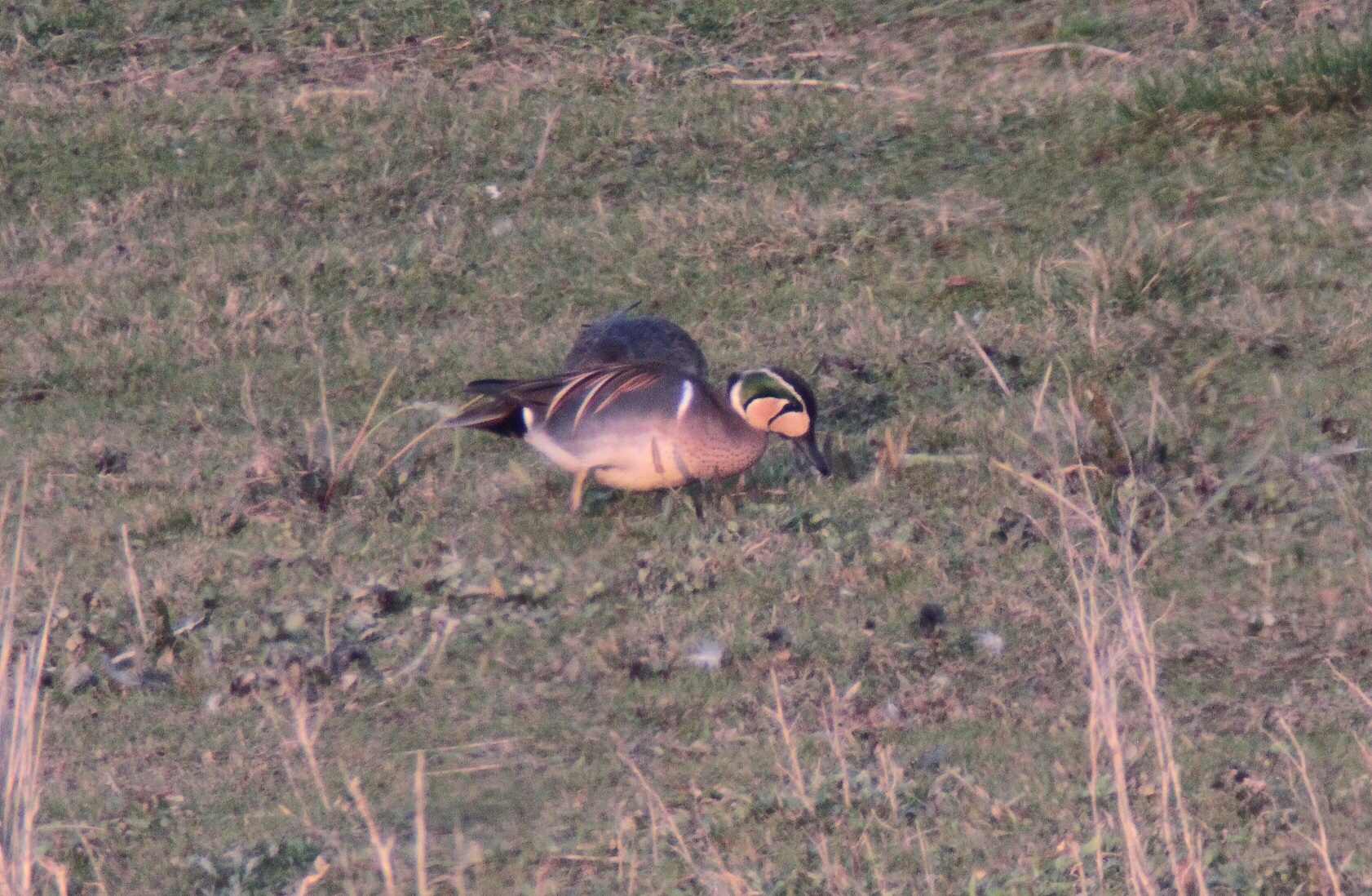
Baikal Teal, Fen Drayton Lakes RSPB, Cambridgeshire (Photo: Jason Ward)

Wood Duck, Stoneybridge, S.Uist, Outer Hebrides (Photo: Steve Duffield)
Further new wildfowl included a drake Blue-winged Teal at Stanwick Gravel Pits (Northants) on 1st, although it flew off shortly after discovery. Cambridgeshire is having a fine time of things: not far from the Baikal Teal, the drake American Wigeon was rediscovered on the Ouse Washes at Pymoor from 29th, and a female Ring-necked Duck was also on the Washes on 29th–30th. The Ring-necked Duck was one five seen, the most outstanding record relating to the first for Spurn (E Yorks), a drake drifting around on the Humber Estuary with a handful of Tufted Ducks on 1st! Others remained on Islay, North Uist and in County Waterford. A drake Ferruginous Duck appeared at the traditional site of Minsmere RSPB (Suffolk) on 26th, lingering and showing well at times until the week's end. A female at Dagenham Chase (London) on 30th is quite feasibly the elusive female seen in the capital in recent winters. A drake Lesser Scaup was also new at Lough Gara (Sligo) on 29th, with the Staffordshire bird still at Tittesworth early on. Nine Green-winged Teal included two again at Newgale Marsh (Pembrokeshire). New Surf Scoters included a female on Campbeltown Loch (Argyll) on 1st (having apparently been present for three days) and a drake off Rerwick Head (Orkney) on 1st; others remained in Fife, Lothian, Dorset and Cornwall. Female King Eiders remained at Portnoo (Donegal) and Fidra (Lothian).

Ferruginous Duck, Minsmere RSPB, Suffolk (Photo: Linda Bohea)
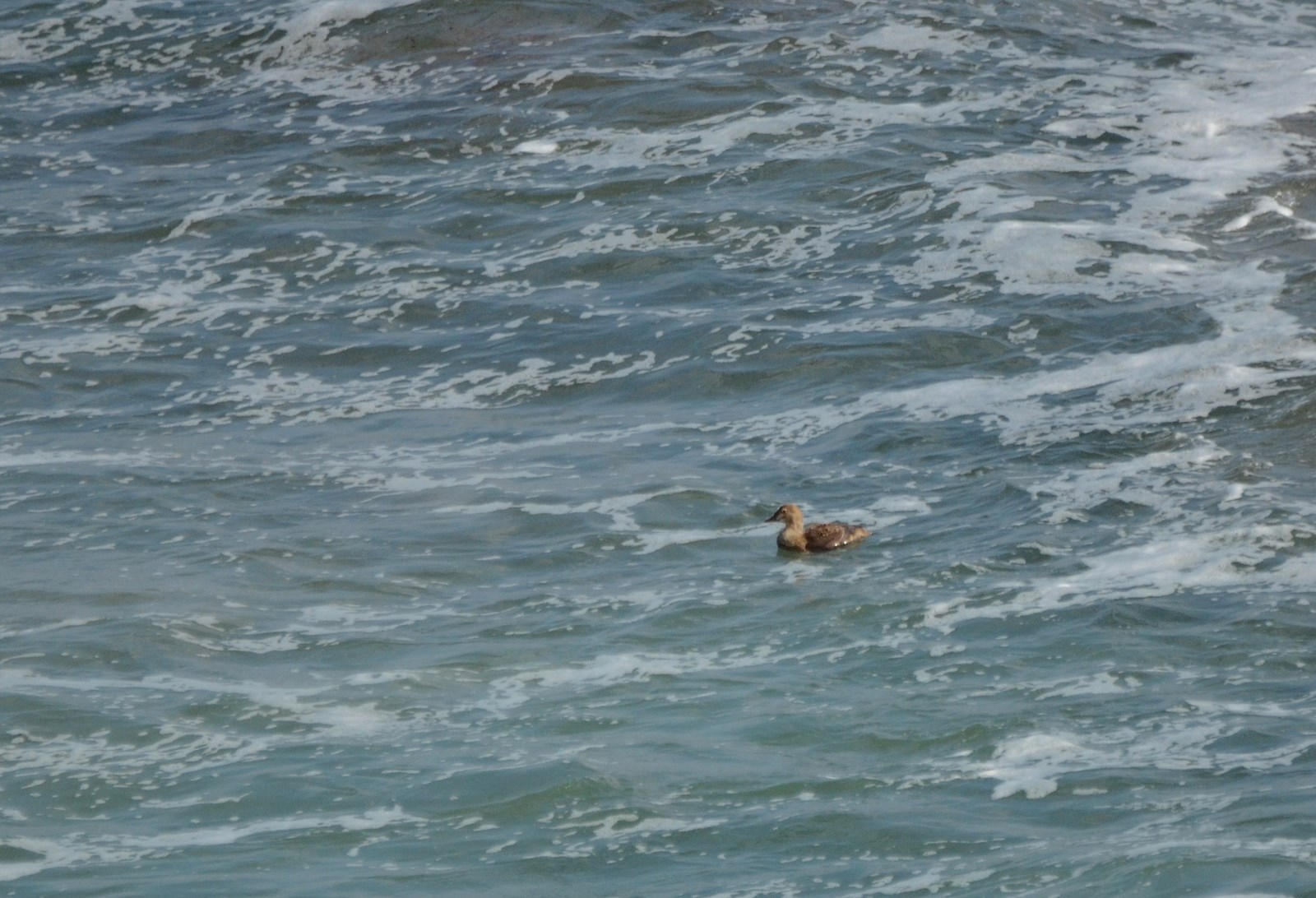
King Eider, Portnoo, Donegal (Photo: Christine Cassidy)
Despite the rising temperatures, geese were still very much evident. Richardson's Cackling Geese remained on Islay and in County Sligo, while a probable Todd's Canada Goose was at Lurgan Green (Louth) on 29th–31st. The unringed Red-breasted Goose was still with the Barnacles at Loaningfoot on 28th and another was with Dark-bellied Brents at Poole Harbour (Dorset) on 30th, before relocating to the Stanpit Marsh area from 31st. Black Brants remained in Cumbria and Lincolnshire. Two Snow Geese — including a metal-ringed bird — were on Iona on 26th and therefore could well be the birds from the Uists. Blue morphs were still at Evie (Orkney), Leys of Cossans (Angus & Dundee) and Forth (Clyde, two), while the pair also remained at Tayinloan (Argyll).
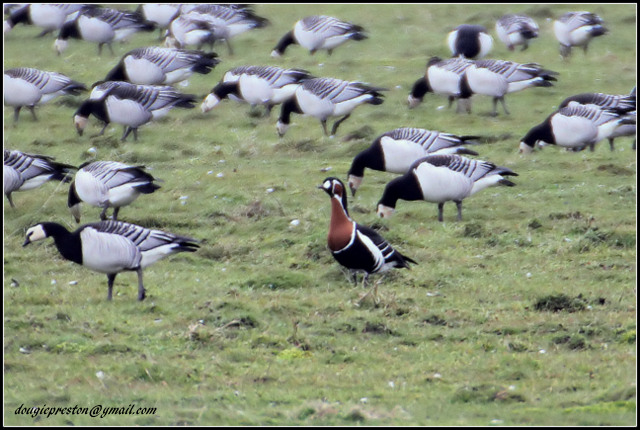
Red-breasted Goose, Loaningfoot, Dumfries & Galloway (Photo: Dougie Preston)
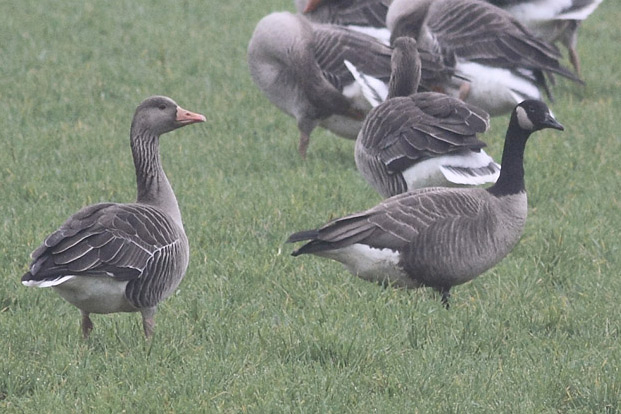
Todd's Canada Goose, Lurgan Green, Louth (Photo: Paul Kelly)

Black Brant, Roa Island, Cumbria (Photo: Jon Worthington)

Snow Goose, Evie, Mainland, Orkney (Photo: Hugh Harrop)

Snow Goose, Leys of Cossans, Angus & Dundee (Photo: Gus Guthrie)
It's looking as though last year's spring build-up of White-billed Divers in the Moray Firth wasn't a one-off, with four, then seven and finally a whopping ten off Portsoy (Aberdeenshire) on 26th; at least ten were later seen from an organized boat trip well offshore on 29th. Single birds were also at Achnahaird and Point of Stoer (both Highland) on 30th, with two back off the traditional location of Port Skigersta, Lewis on 31st and another off Herston, South Ronaldsay (Orkney) on 1st.

White-billed Diver, Herston, S.Ronaldsay, Orkney (Photo: Hugh Harrop)
In addition to the usual bunch of Glossy Ibis and Great White Egrets, Cattle Egrets were at Mousehole (Cornwall) on 31st and still at Steeple Claydon (Bucks). A single White Stork was presumably responsible for a glut of sightings in the North-west on 26th: flyovers were seen at Seaforth, Fleetwood, Thornton and Heysham. It may also have been the same bird which flew over Cleethorpes (Lincs) on 1st, though another over Hurstpierpoint (W Sussex) on 26th could be that seen at Pett Level on 22nd.

Glossy Ibis, Brownhills, West Midlands (Photo: Dave Hutton)

Great White Egret, Shapwick Heath NNR, Somerset & Bristol (Photo: James Gibbs)
A white-morph Gyr at Balranald, North Uist on 28th led the way among interesting bird of prey sightings, with at least one Rough-legged Buzzard still touring the East Norfolk marshes.
It seems logical to assume that the Pectoral Sandpiper at Reedy Flats, Lough Neagh (Armagh) on 30th is that last seen at Ardmore Point on Christmas Eve; if so, it represents another wintering record. More familiar winter features are Long-billed Dowitcher and Lesser Yellowlegs, and both were to be found in Hampshire again throughout the week.
What looks a fine candidate for a Baltic Gull was seen and photographed at Sandwich Bay (Kent) on 28th, though not again. Again, it lacked that crucial bit of evidence — a ring — and will only go down as 'presumed'. Cardiff Bay's Bonaparte's Gull was joined by a second adult on 30th, though it was back down to just a single bird by the week's end. Galway's Forster's Tern was still present on 30th, along with one of ten or so Ring-billed Gulls seen in Ireland — the top tally of three came from Tralee Bay Wetlands (Kerry). In Britain, a first-winter was reported from Shawell (Leics) on 30th and adults were at Crosby Marine Park (Lancs) on 1st and still at Dingwall (Highland), but it appears the Hampshire bird has now moved on.
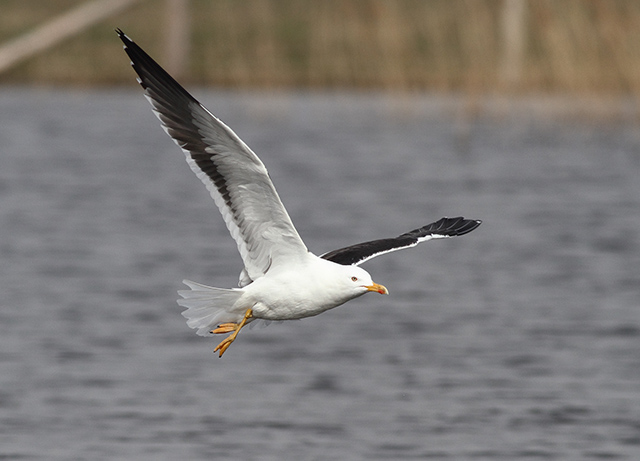
Presumed Baltic Gull, Sandwich Bay, Kent (Photo: Steve Ray)
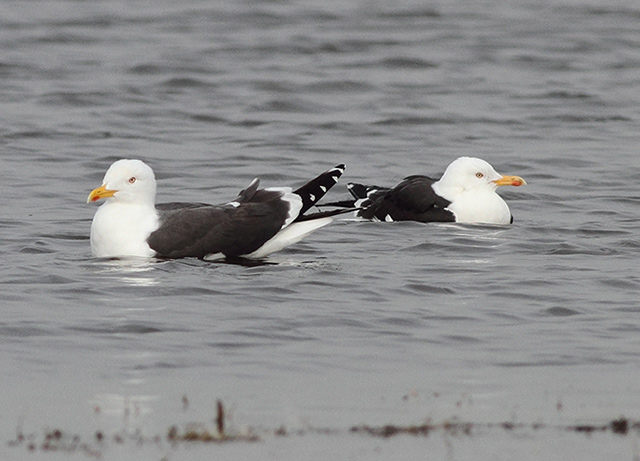
Presumed Baltic Gull (right), Sandwich Bay, Kent (Photo: Steve Ray)
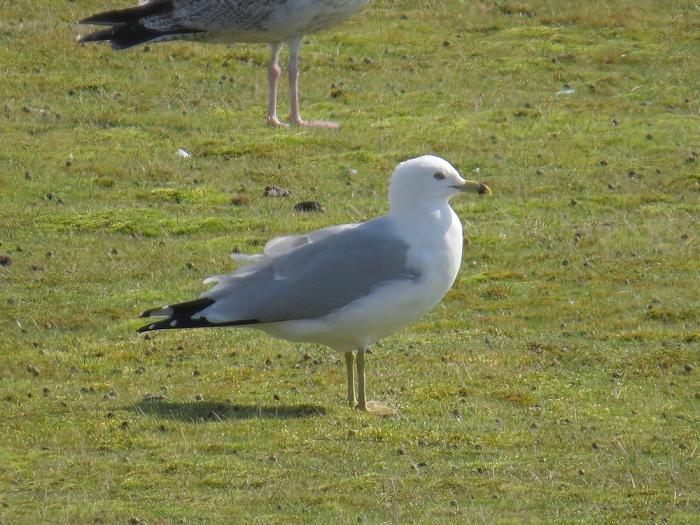
Ring-billed Gull, Crosby Marine Park, Lancashire (Photo: Pete Kinsella)

Ring-billed Gull, Tralee, Kerry (Photo: Ed Carty)
The week's rarest migrant was a Red-flanked Bluetail on Fair Isle (Shetland) on 30th. Though the tenth for the island, it represents the first spring record — a stat that really reflects the changing British status of this species, established as a regular autumn vagrant but now also an increasing spring visitor. Ten years ago, this record would have attracted big headlines, but, without wanting to sound dismissive, it almost seems expected in the 2010s.

Red-flanked Bluetail, Fair Isle, Shetland (Photo: Deryk Shaw)
Overshoots didn't really get much better than a dozen Hoopoes: birds were in Cornwall (3), Devon, Dorset, West Sussex (a popular bird at Climping on 29th–1st), and on the Isle of Wight and Isles of Scilly. One penetrated as far north as Ryton Pools (Warks) on 29th, while wintering birds remained at Leswalt (Dumfries & Galloway) and Snodland (Kent). Another on Jersey from 31st shared the island with a fine Great Spotted Cuckoo. A Serin lingered on St Mary's (Scilly) all week and two were reported in Eastbourne (E Sussex) on 1st. Another flew over Landguard (Suffolk) on 30th. The Richard's Pipit was still at Gramborough Hill (Norfolk) on 28th, with presumably the same at nearby Cley Marshes on 30th; Suffolk's elusive Olive-backed Pipit was seen again at Leiston on 27th.
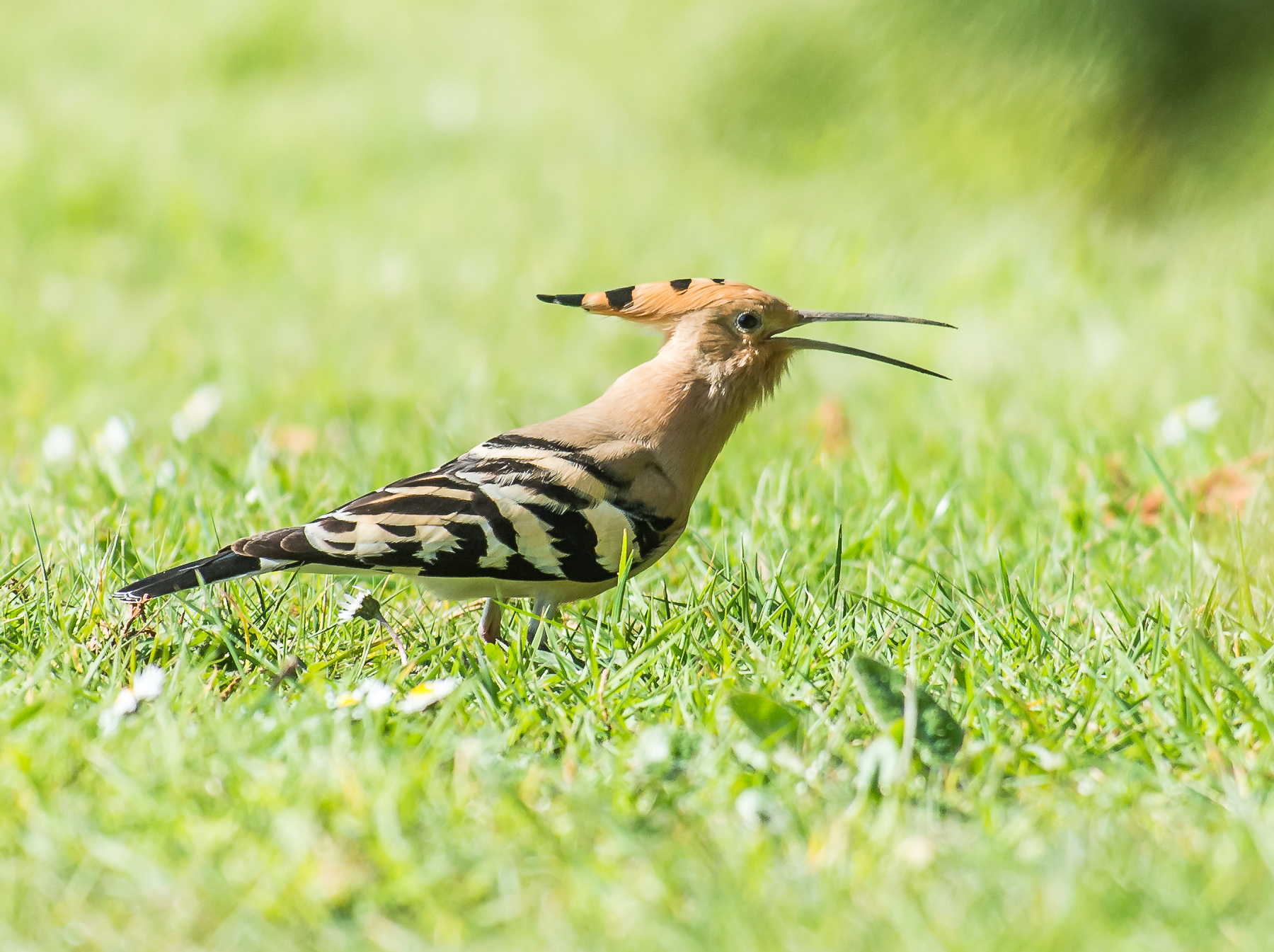
Hoopoe, Climping, West Sussex (Photo: John Stanton)
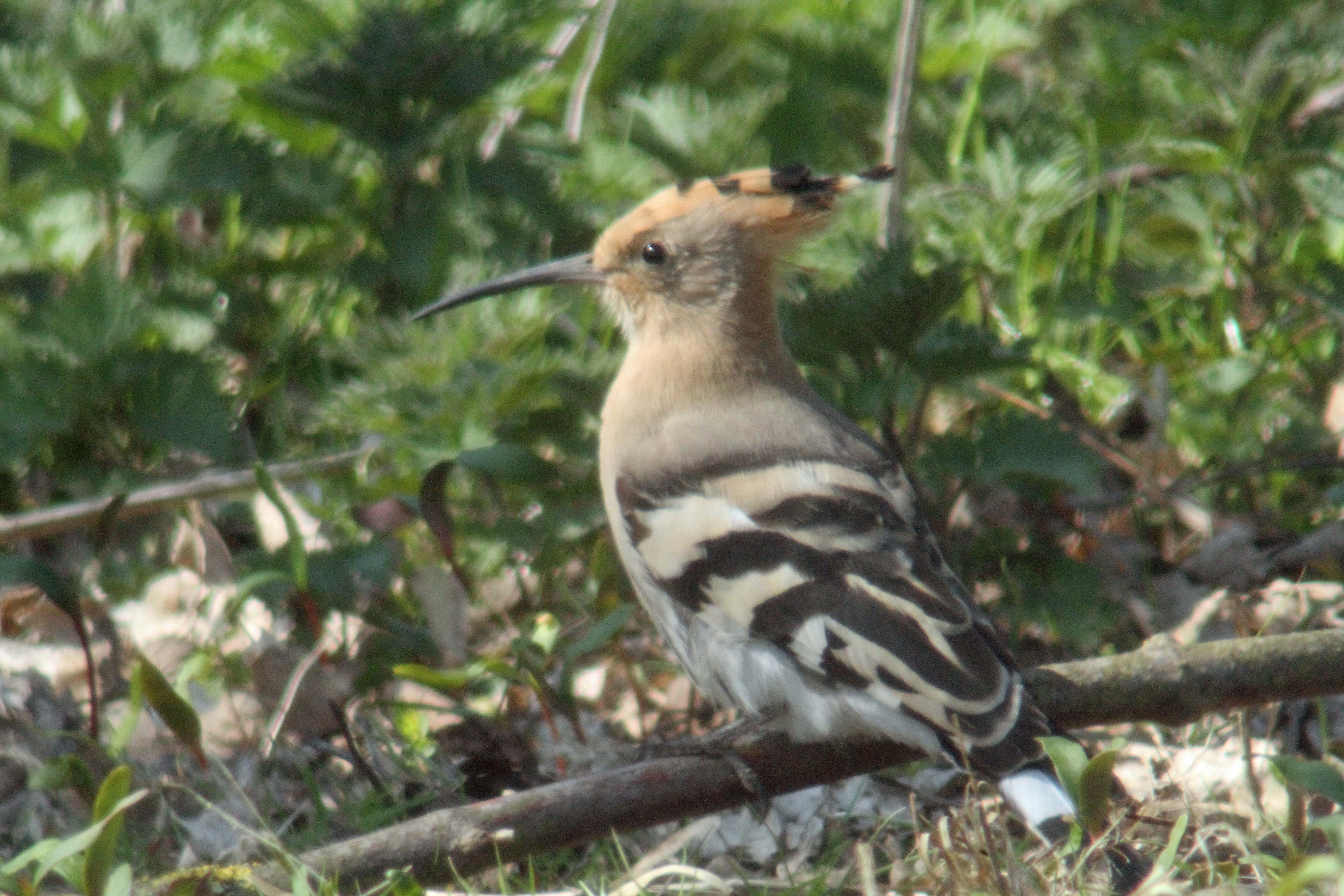
Hoopoe, Snodland, Kent (Photo: Mark Leitch)
Kent's Hume's Leaf Warblers were still present in Ramsgate and Dungeness on 29th and 31st respectively; Yellow-browed Warblers remained at Bruton sewage works (Somerset) and Uffmoor Wood (Worcs). Suffolk's Dusky Warbler also continued to show well at times at Oulton Marshes throughout the week.

Dusky Warbler, Oulton Broad, Suffolk (Photo: Jake Gearty)
In Cheshire, the Coues's Arctic Redpoll was still visiting feeders in a Macclesfield garden on and off to at least 30th; a new male Two-barred Crossbill was at Dove Stone RSPB (Gtr Man) from 31st in addition to at least five at Lynford Arboretum (Norfolk) on 27th (smaller numbers on dates either side), three still at Broomhead Reservoir (S Yorks) and at least one still in the Forest of Dean at Serridge Ridge (Glos) on 26th. A female Parrot Crossbill was a surprise report from Meenbog (Donegal) and two were reported again at Mayday Farm (Suffolk) on 28th.
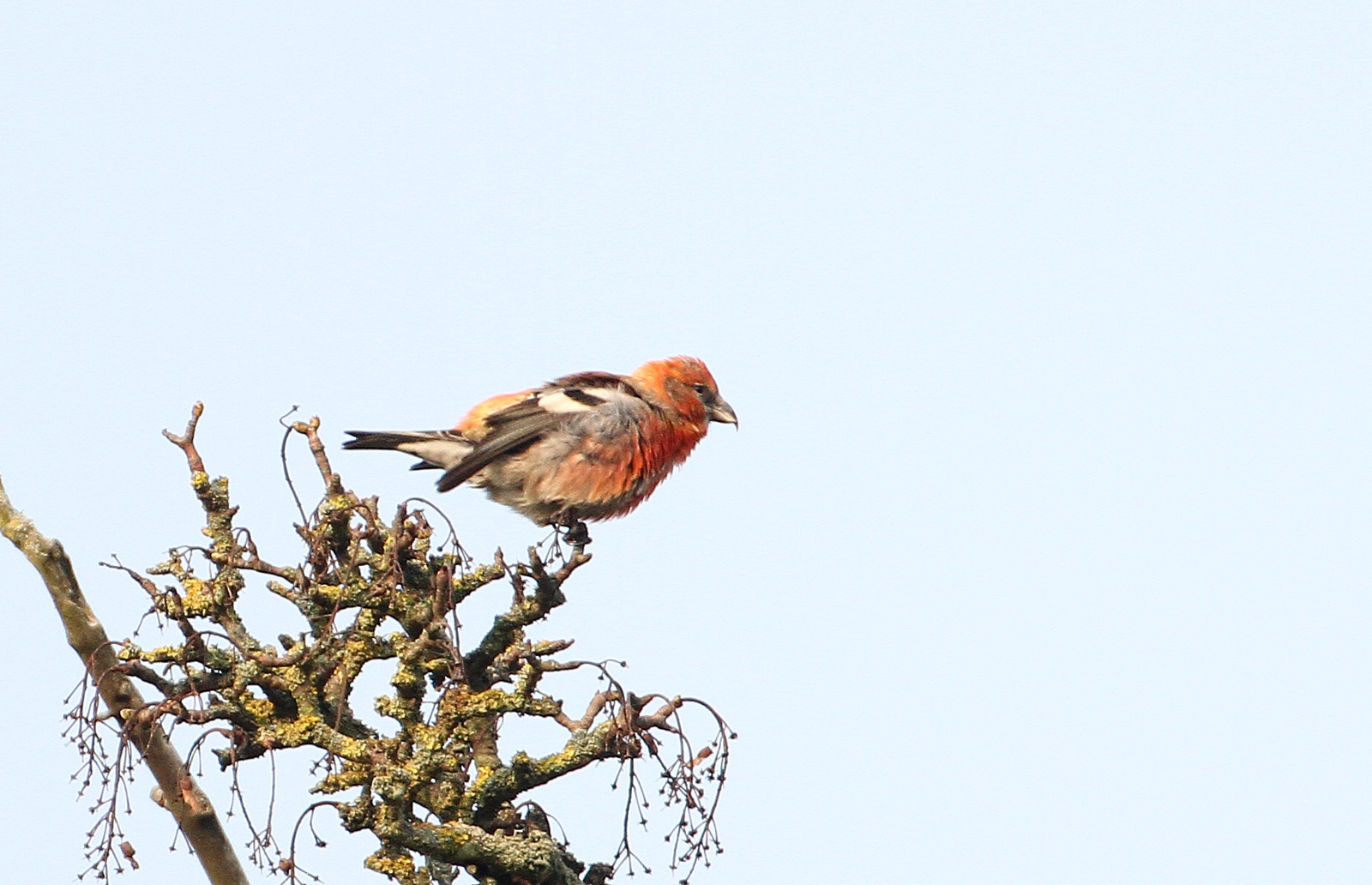
Two-barred Crossbill, Lynford Arboretum, Norfolk (Photo: Adi Sheppard)

Two-barred Crossbill, Dove Stone RSPB, Greater Manchester (Photo: rezMole)
Photo of the Week

Great Spotted Woodpecker, undisclosed site, Norfolk (Photo: Matt Crosby)
As we've noted on numerous occasions, bird-in-flight (BIF) photography is the ultimate photographic challenge. No matter how much you spend on photographic gear, you cannot consistently bag great BIF shots without putting in huge amounts of effort. Matt Crosby's flight shot of a Great Spotted Woodpecker uploaded this week is a good example. Such a pin-sharp shot of a bird flying at an angle towards the viewer at eye level against a diffuse vegetation background takes an abundance of preparation, patience and skill. The result, though, is an impressive and engaging image that allows the viewer to enjoy at leisure a scene that would normally be glimpsed for only a fraction of a second.
Other notable images
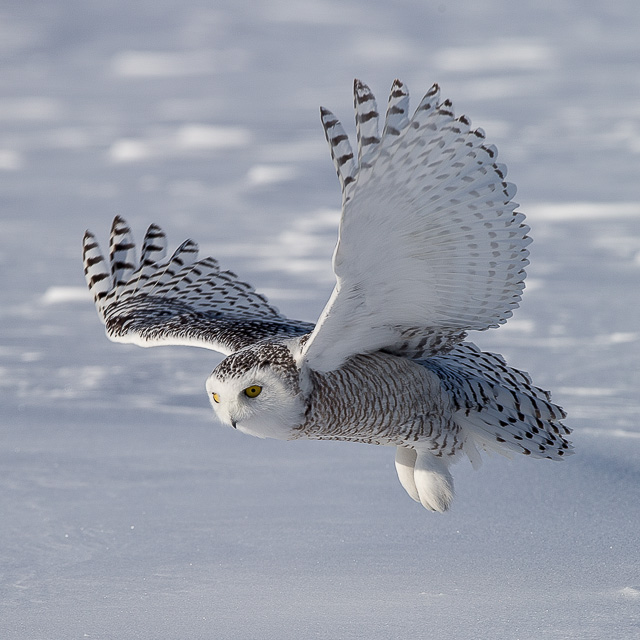
Snowy Owl, Canada (Photo: Jacques Cloutier)

Black-tailed Godwit, Frampton Marsh RSPB, Lincolnshire (Photo: Nick Clayton)

Hawfinch, undisclosed site, Cumbria (Photo: Jon Worthington)

Green Woodpecker, undisclosed site, Essex (Photo: Pixellence)

Lapwing, undisclosed site, Durham (Photo: Joe Seymour)

Treecreeper, Crick, Gwent (Photo: Brian Williams)

Little Grebe, Matlock, Derbyshire (Photo: Steve)

Superb Fairywren, Australia (Photo: Alan Redley)


